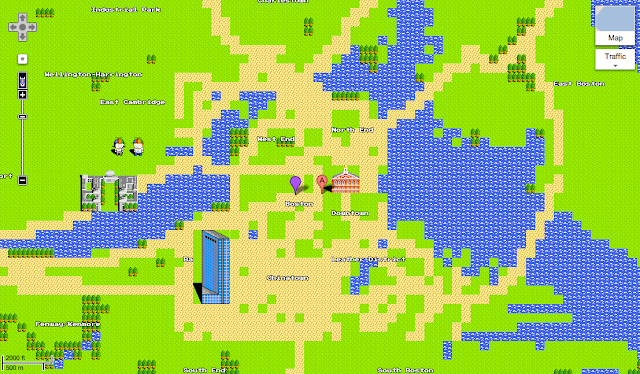So, the Economist published a brief interview with psychoanalyst Adam Phillips last week in which Phillips points to the similarities between psychoanalysis and poetry. The interviewer asks Phillips about the introduction of one of his books, in which he refers to psychoanalysis as a “kind of practical poetry.” Phillips responds:
On the one hand, psychoanalysis is practical in the sense that there is an attempt to solve a problem, or to cure somebody, or at least to address their suffering. But the other thing that psychoanalysis does is that the project is to enable somebody to speak. It’s the attempt to create the conditions in which somebody can speak themselves as fully as possible.
It is as though Freud invented a setting or a treatment in which people could not exactly speak the poetry that they are, but that they could articulate themselves as fully as they are able. [A session] lasts 50 minutes, and it’s always at the same time each week, just like a sonnet is always 14 lines. It’s a similar thing. The form makes possible the articulation.
I don’t know. What do you think? I feel like maybe there’s something there, but the analogy isn’t quite working for me. Yes, structure (or form, or constraint, or whatever) plays a critical role in poetry. Some poetry, anyway. In those poems, however, it has always seemed to me that the role of form is to constrain the creative impulse, to cut off most avenues, and create a sort of internal pressure, which sends that creativity off in some other direction.
Imagine you’ve got a room, and you pump in a bunch of ketchup. (Stay with me here.) And then all the ketchup gooshes predictably out the door, and maybe also out the window, assuming you’re pumping it in fast enough. That’s, like, Maroon 5 lyrics. Now, plug up the door and the window, and just keep pumping in ketchup. With the obvious escapes blocked, pressure builds, and the ketchup starts to seep into some of the (heretofore unnoticed) cracks in the wall. Pretty soon, a huge chunk of the wall explodes, killing the annoying neighbor who really needs to get curtains in their bathroom, and splattering the neighborhood with lycopene-rich poetry goodness.
Right?
 |
| When tomatoes turn to poetry |
The fifty-minute psychoanalysis session seems different to me, more like a sort of safety belt. You can dig into uncomfortable or even dangerous territory with the comfort of knowing that at the end of the session you’ll be able to stop. Maybe it’s like a bungee cord, then.
It seems to me that the benefits of formal constraint in poetry is more analogous to specific tactics that a psychoanalyst might employ, like word association, or inkblots, or, you know, things that actual, non-fictionalized psychoanalysts do.
The regularity of the session, the same-time-every-week-ness, which creates a context in which speech occurs, strikes me as related in a different way. It sets an expectation, in the way that, say, having a writing group does. So, maybe that would be like the pressure that is pumping all that ketchup into the room in the first place.
I was hoping that this was all going to come together in a way that seems not to be really happening, so I’ll just jump to the other thing. [Clever transition T/K]
Speaking of that, how about John Berryman’s Dream Songs! Berryman is one of those mid-century poets who started off writing in the New Criticism professor/poet style, where every word was chosen with the idea that graduate students would someday be writing theses about them. But then he underwent years of psychoanalysis, and started writing down his dreams. Out of that came the Dream Songs. They have a much more informal, unguarded feel, mix all sorts of diction, and represent some of the best of the “confessional” movement in American poetry. Each song consists of three stanzas with six lines each. Taken all together (there are 365 of them, although, to be honest, he could have just stopped after the first 77), they form a long narrative of self examination.
So, not only was the diction and content explicitly influenced by Berryman’s experience with psychotherapy, but the form was as well, with each song like its own fifty-minute therapy session.
Anyway, I’ll get out of the way at this point, and just let you enjoy a couple.
Dream Song 1
Huffy Henry hid the day,
unappeasable Henry sulked.
I see his point,–a trying to put things over.
It was the thought that they thought
they could do it made Henry wicked & away.
But he should have come out and talked.
All the world like a woolen lover
once did seem on Henry’s side.
Then came a departure.
Thereafter nothing fell out as it might or ought.
I don’t see how Henry, pried
open for all the world to see, survived.
What he has now to say is a long
wonder the world can bear & be.
Once in a sycamore I was glad
all at the top, and I sang.
Hard on the land wears the strong sea
and empty grows every bed.
Dream Song 29
There sat down, once, a thing on Henry’s heart
só heavy, if he had a hundred years
& more, & weeping, sleepless, in all them time
Henry could not make good.
Starts again always in Henry’s ears
the little cough somewhere, an odour, a chime.
And there is another thing he has in mind
like a grave Sienese face a thousand years
would fail to blur the still profiled reproach of. Ghastly,
with open eyes, he attends, blind.
All the bells say: too late. This is not for tears;
thinking.
But never did Henry, as he thought he did,
end anyone and hacks her body up
and hide the pieces, where they may be found.
He knows: he went over everyone, & nobody’s missing.
Often he reckons, in the dawn, them up.
Nobody is ever missing.
My god. That third stanza in Dream Song 29, I could just sit here and read it all day.





